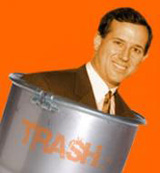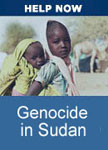Survivors
The Guardian reprints an article from The New Yorker by John Hershey, a western journalist who made it into Hiroshima shortly after the bomb was dropped [Parts One and Two]. These six profiles chronicle the moment of impact that has scarred generations upon generations- the first atomic bomb blast dropped on humanity, killing thousands.
And that pain is also not a validation or a justification for recreating that pain. There are thousands of survivors in Iraq now; 25,000 people killed since the war on terror began. Every one of them has family, friends- those are the survivors. How will they, in turn, react? The way things are going right now, they're taking the American model.
A hundred thousand people were killed by the atomic bomb, and these six were among the survivors. Later, they wondered why they lived when so many others died. Each of them counted many small items of chance or volition - a step taken in time, a decision to go indoors, catching one streetcar instead of the next - that spared him. And afterwards each knew that, in the act of survival, he had lived a dozen lives and had seen more death than he ever thought he would see.Coupled with documents such as Haruki Murakami's Underground, there's a lot to be learned from the testament of the victim- in terms of survival, chance, comprehension, scars. It's not just an American experience, from 9/11. And we are all, to some degree, survivors of that event, but some have much more personal stories to share.
At the time, none of them knew anything. Then a tremendous flash of light cut across the sky. Reverend Tanimoto has a distinct recollection that it travelled from east to west, from the city toward the hills. It seemed a sheet of sun. Both he and his friend Mr Matsuo reacted in terror - they had time to react for they were 3,500 yards, or two miles, from the centre of the explosion. Matsuo dashed up the front steps into the house and dived among the bedrolls and buried himself there. Reverend Tanimoto took four or five steps and threw himself between two big rocks in the garden. He bellied up hard against one of them. As his face was against the stone, he did not see what happened. He felt a sudden pressure, and then splinters and pieces of board and fragments of tile fell on him. He heard no roar. (Almost no one in Hiroshima recalls hearing any noise of the bomb.)
When he dared, Reverend Tanimoto raised his head and saw that the rich man's house had collapsed. He thought a bomb had fallen directly on it. Such clouds of dust had risen that there was a sort of twilight around. In panic, not thinking for the moment of Matsuo under the ruins, he dashed out into the street. In the street, the first thing he saw was a squad of soldiers who had been burrowing into the hillside opposite, making one of the thousands of dugouts in which the Japanese apparently intended to resist invasion, hill by hill, life for life. The soldiers were coming out of the hole, where they should have been safe, and blood was running from their heads, chests, and backs. They were silent and dazed. Under what seemed to be a local dust cloud, the day grew darker and darker.
And that pain is also not a validation or a justification for recreating that pain. There are thousands of survivors in Iraq now; 25,000 people killed since the war on terror began. Every one of them has family, friends- those are the survivors. How will they, in turn, react? The way things are going right now, they're taking the American model.






0 Comments:
Post a Comment
<< Home